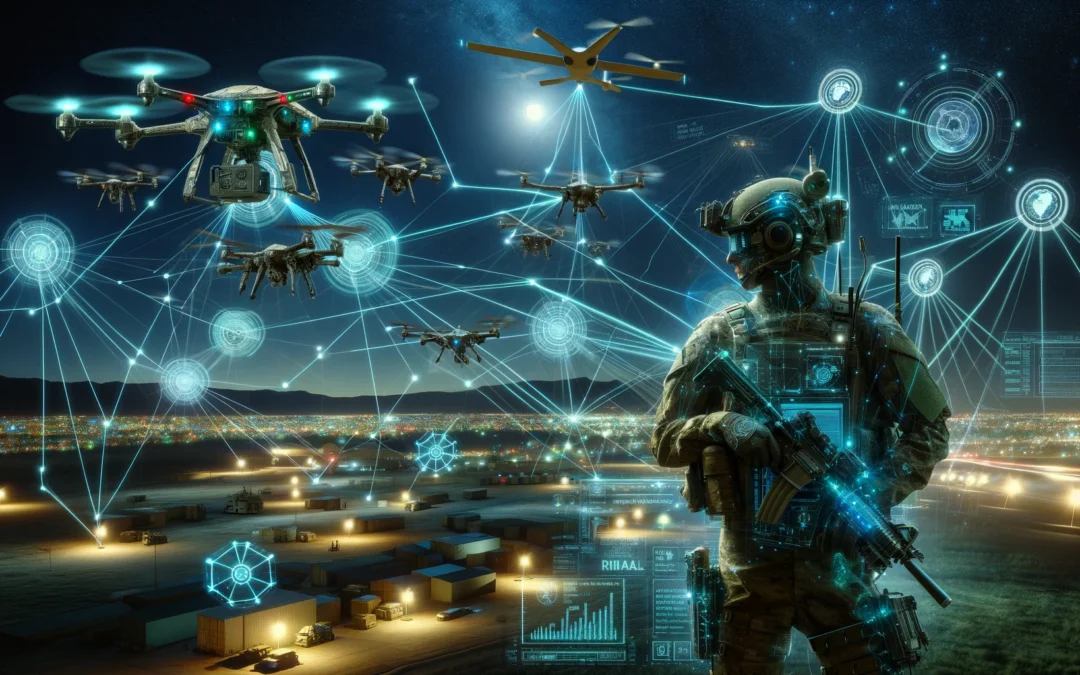In the intricate choreography of modern warfare, the role of C4ISR systems – encompassing Command, Control, Communications, Computers, Intelligence, Surveillance, and Reconnaissance – is pivotal. Like the nervous system in the human body, C4ISR integrates various components of military operations, facilitating seamless communication, decision-making, and execution of complex missions. This article delves into the realms of these systems, exploring their functions, advancements, and the ethical implications entwined with their use.
The Anatomy of C4ISR: Components and Functions
Command and Control (C2): At the heart of C4ISR lies the command and control component. It’s akin to the brain, making strategic decisions and directing military forces. Using advanced communication networks, C2 ensures that orders are conveyed accurately and promptly across various echelons.
Communications: The lifeline of C4ISR, communication systems, ensure uninterrupted links between different units. These range from encrypted digital communication networks to sophisticated satellite links, enabling real-time data transfer even in hostile environments.
Computers: The computational power in C4ISR systems cannot be overstated. From processing vast amounts of data to running complex algorithms for decision support, computers are the workhorses that turn raw data into actionable intelligence.
Intelligence: Gathering and analyzing information about the enemy’s strength, position, and intentions is crucial. This involves human intelligence, signal intelligence, and image intelligence, providing a comprehensive understanding of the battlefield scenario.
Surveillance and Reconnaissance: These are the eyes and ears of the military. Surveillance involves continuous monitoring, while reconnaissance is about specific information gathering. Technologies like drones, satellites, and radar play a pivotal role here.
Advancements in C4ISR: A Glimpse into the Future
The evolution of C4ISR systems has been phenomenal, driven by technological advancements. Artificial Intelligence (AI) and Machine Learning (ML) are revolutionizing these systems. AI algorithms can process vast datasets, predict enemy movements, and even assist in decision-making.
The integration of cyber warfare capabilities into C4ISR is another critical development, enabling forces to attack or defend digital infrastructures. Space-based C4ISR capabilities, with satellites providing global coverage, have expanded the operational theater to a cosmic level.
The advent of quantum computing promises to elevate these systems to unprecedented efficiency, potentially breaking and creating unbreakable encryptions.
Ethical Implications: The Double-Edged Sword
While C4ISR systems offer unmatched advantages, they also present profound ethical dilemmas. The reliance on AI for decision-making in warfare raises questions about accountability and the moral implications of machine-made decisions, especially in life-and-death situations.
The risk of surveillance overreach, both in military and civilian spheres, is a growing concern, highlighting the need for stringent ethical guidelines and oversight.
Conclusion: Navigating the C4ISR Terrain
As we advance, C4ISR systems will continue to be the linchpin of military operations. Balancing technological advancement with ethical responsibility will be crucial. Understanding these systems, their capabilities, and their implications is not just for military strategists but for everyone, as the line between military and civilian technologies blurs.










